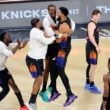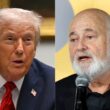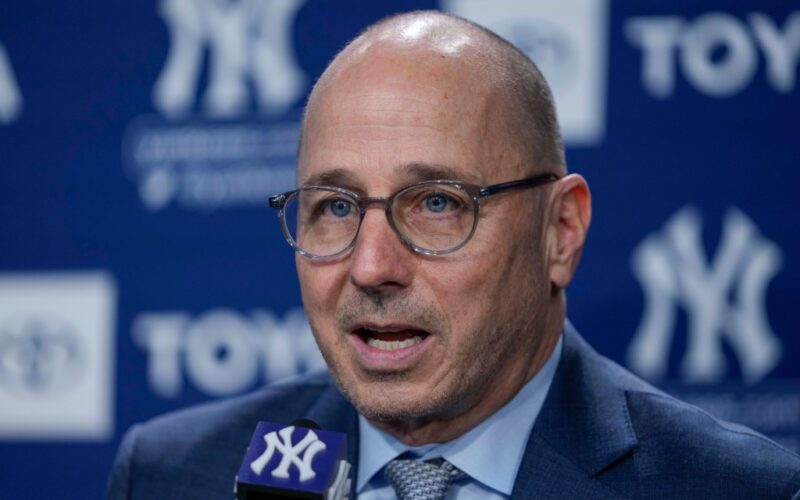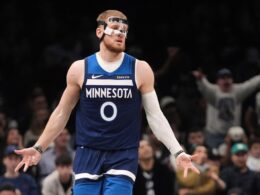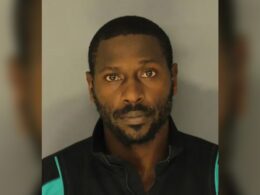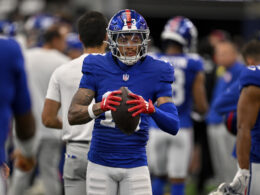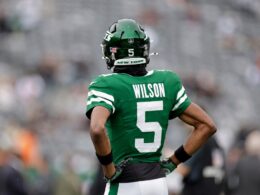Aaron Boone believed the 2025 Yankees could be his best, yet the team’s season ended the same way it did in the manager’s previous seven years at the helm: without a championship.
Now a busy offseason awaits, as the team has a handful of internal free agents and several external targets to pursue. A remodeling isn’t required after the Yankees were eliminated in the ALDS, but some new pieces should be in place come Opening Day if the club wants to get back to the World Series.
The Yankees will also want to adopt some new philosophies while reviving some old ones. With that in mind, here are some ways the Yankees should be thinking as Boone, Brian Cashman and company brace for winter.
KEEP SWINGING BIG
With the Yankees’ projected payroll for 2026 currently at $263.9 million, per Cot’s Contracts, the team has plenty of financial room to swing for the fences.
They did that last offseason after losing the World Series, offering Juan Soto a $760 million contract before he defected to the Mets. Then they pivoted to Max Fried, who signed an eight-year, $218 million deal, the largest guarantee ever given to a lefty.
This winter, Kyle Tucker will be the top — and most expensive — free agent on the market. While the outfielder won’t come close to Soto’s money, Tucker is expected to sign a deal in the neighborhood of $400 million. That’s a lot, and Tucker comes with questions about his defensive fit. However, he’s an elite hitter who would be well-positioned to succeed Aaron Judge, entering his age-34 season, as the dominant bat in the pinstripers’ lineup down the road.
The Yankees can afford and should seriously pursue Tucker after exploring a trade for him last offseason.
If Tucker doesn’t pan out again, Cody Bellinger would be an excellent — and cheaper — consolation prize after an impressive first season in pinstripes. But if that’s the path the Yankees end up on, they need to scour the market for other elite talents.
They are not necessarily fits for some of the other top hitters who will potentially hit free agency, including Alex Bregman, Kyle Schwarber, Bo Bichette and Pete Alonso, but the Yankees could use their starting pitching depth to trade for a frontline starter like Detroit’s Tarik Skubal or Minnesota’s Joe Ryan. They could also pursue a free agent reunion with Michael King and trade some of their rotation depth for lineup and/or bullpen help.
EMBRACE COMPETITION AT SHORTSTOP
Ever since winning the Yankees’ starting shortstop job as a rookie coming out of spring training in 2023, Anthony Volpe has had an undeserved chokehold on the position.
Part of that is because there haven’t been many viable challengers throughout Volpe’s three-year career. But it’s also because the Yankees have stubbornly stood by the incredibly streaky 24-year-old, insisting he has more to offer despite consistently subpar offensive output and a 2025 season that saw his Gold Glove defense regress.
The Yankees did give super utilityman José Caballero some run at shortstop in September, but that coincided with Volpe’s recovery from a cortisone shot for his partially torn labrum, which he played through for most of the year (the Yankees insisted the injury didn’t impact his play on either side of the ball). Once Volpe returned from the injection, he received the majority of the starts at short. That included every postseason game, a stretch that saw Volpe hit .192 with a .538 OPS, one home run, two RBI, zero walks and a whopping 16 strikeouts.
Their past actions say they won’t, but the Yankees need to, at the very least, embrace competition for Volpe. That may just mean a spring training battle with Caballero — Bichette is a terrible defender and there aren’t many other practical external options — but the team needs to stop handing the keys to a player that hasn’t proven he can drive without crashing.
VELOCITY NEED IN THE BULLPEN
Despite some star power, the Yankees’ bullpen was a mess in 2025, as impending free agents Devin Williams and Luke Weaver struggled while injuries ravaged the group.
The unit also lacked heat, as the pen ranked in the bottom half of the league in average fastball velocity and in the bottom five in fastball usage. That’s important because faster pitches are harder to hit.
The Yankees tried to rectify this problem with the acquisitions of David Bednar and Camilo Doval at the trade deadline, and they saw some improvement. But the bullpen still lacked velocity come playoff time. A handful of free agent relievers could help the Yankees add some mph to their relief core next year, including, but not limited to, Ryan Helsley, Kyle Finnegan, Hunter Harvey, Michael Kopech, Gregory Soto, Luis García and Seranthony Domínguez.
The Yankees also have some internal options who could help in this regard. Luis Gil comes to mind, as Gerrit Cole and Clarke Schmidt’s eventual returns from Tommy John surgery will crowd the Yankees’ rotation. There’s also top-100 prospect Carlos Lagrange, who possesses a 100-mph fastball.
A LITTLE CONTACT COULD GO A LONG WAY
While the Blue Jays bludgeoned the Yankees in the ALDS, they also drove them crazy during the regular season by putting the ball in play, fouling off tough pitches and stringing together long at-bats. The death-by-papercut approach was something Yankees’ pitchers mentioned throughout the year when asked why Toronto’s division-winning lineup was so difficult to navigate.
It wouldn’t hurt the Yankees to adopt some of that. That’s not to say they should stop being the Bronx Bombers — the Yanks had baseball’s best regular season offense in 2025 — but a little more contact could go a long way.
Judge provided a ton, winning his first batting title with a .331 average. Bellinger provided some as well, as he has a knack for tailoring his approach and swing to the situation. But there’s no guarantee he’ll be back.
Jazz Chisholm Jr. and Volpe could use some more contact in their games, as their speed can get them on base and into scoring position at higher clips. They shouldn’t sacrifice all of their power — Chisholm just had a 30-30 season and Volpe is a better hitter when pulling the ball in the air — but they had two of the 20 highest Zone Swing & Miss percentages in baseball last season. Chisholm actually had the third highest, while Yankees third baseman Ryan McMahon had the second-highest.
LEAN INTO PLATOON OPTIONS
Another thing the Yankees noticed about the Blue Jays was how they leaned into platoons. They noted how the Red Sox, among others, did the same.
The Yankees gave themselves platoon options prior to the trade deadline, acquiring Amed Rosario and Austin Slater, as well as Caballero. Paul Goldschmidt also transitioned into more of a platoon role as the season progressed.
Still, there were instances in which Boone didn’t lean into the options at his disposal. That should happen more in 2026, provided the Yankees maintain those options.
It wouldn’t be a surprise to see them re-sign Rosario, as he had been a target for years, was a positive clubhouse influence and can play third in place of the light and lefty-hitting McMahon when there’s a left-hander on the mound.
Slater is also a free agent, but he didn’t do much to warrant a reunion.
Japan’s Kazuma Okamoto is also an intriguing fit, as the right-handed hitter can play both corner infield positions — the Yankees have the lefty-swinging Ben Rice at first — and handles southpaws well.


